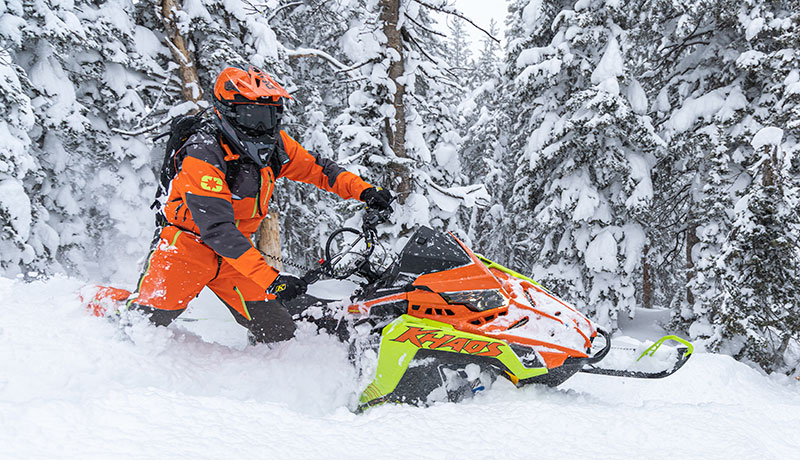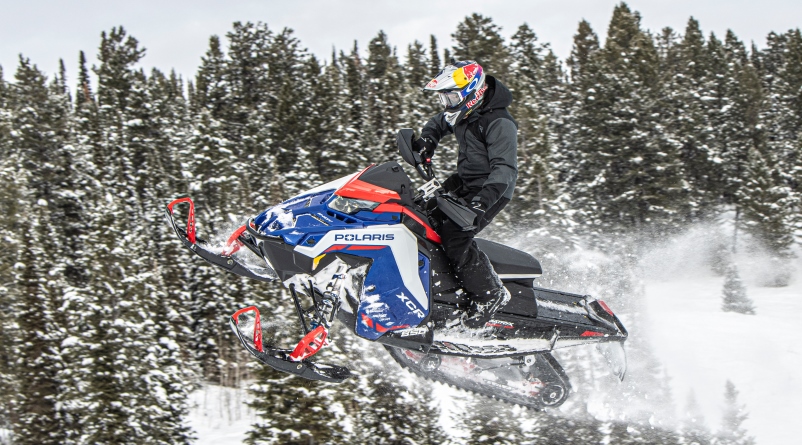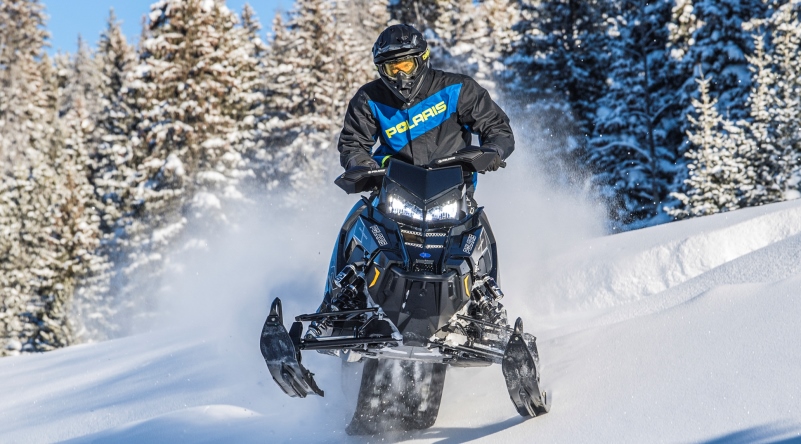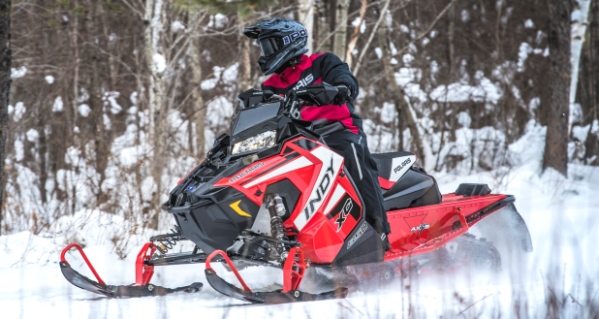 Polaris IQ sleds usually work well right out of the box. You fire them up, grab the handlebars and drive away on a machine that rides and handles well, is fairly comfortable and runs strong. But our Shift 136 demo sled gave us some grief from the powertrain early in the riding season last year. Fortunately after a few updates and repairs were performed, it became the well-running snowmobile that we expected.
Polaris IQ sleds usually work well right out of the box. You fire them up, grab the handlebars and drive away on a machine that rides and handles well, is fairly comfortable and runs strong. But our Shift 136 demo sled gave us some grief from the powertrain early in the riding season last year. Fortunately after a few updates and repairs were performed, it became the well-running snowmobile that we expected.
The sled had a persistent mid-range hesitation on our first ride, so we brought it to a dealer to have the engine’s electronic control unit reflashed and a new helix and spring installed in the secondary clutch, as recommended by Polaris. The changes brought an improvement in performance most of the time, but the sled still suffered an imtermittent bog around 6000 rpm if we hit the throttle hard, like when accelerating aggressively out of a corner. It went back to the dealer a few weeks later.
This time the shop replaced the pistons and rings because the original parts had deep scuffs on the intake side, but there was no clear culprit of the damage. We hit the trail again, and the Cleanfire 2 engine ran trouble-free for the rest of the season. The sled pulled hard out of the hole up to the top end and throttle response was crisp. With everything fixed up, we enjoyed this hybrid sled on the trails yet it was versatile and fun for bombing around on logging roads and backwoods adventures.

Shift models are palettes for customization, and we added many parts to boost performance and give our machine a unique, clean look. White handguards offered some protection and looked cool when coordinated with a matching windshield and aftermarket skis. We replaced the stock 136-inch banana peel with an aggressive Camoplast Cobra track with 1.25-inch lugs and fingers that were slightly longer. The wavy lug pattern stabilized the rear end and gave more side-to-side control through turns on hard-packed snow.
As expected, the taller lugs gave extra traction and a solid feel on the trail, not to mention more digging ability when off trail on trips to Cooke City, Montana, and the Michigan U.P. While the trail-tuned Shift 136 isn’t as easy to carve through powder snow as an RMK, it was easy to handle while boondocking.
Ride quality and handling was typical IQ. One staffer said the rear end bottomed hard on sharp-edged bumps. Steering effort and handling was good, both with the stock skis and the white C&A Pros we installed. While the longer rail caused more corner push than a short track IQ, it was a predictable sled that handled well when cruising or blasting through the woods. We added Fox FLOAT 2 shocks over the skis, which made the sled feel more planted and stuck to the trail than it did with the stock coil-over dampers.
Most riders wore a backpack when they rode this sled because its storage capacity was equal to that of a coin purse. We realize that designers at Polaris kept the features list short on Shift models to keep the price low, but the recent trend by sled manufacturers not to include storage is a crime against all humanity. OK, maybe it’s not that severe, but hopefully that trend will soon be reversed and trunks will be standard on all sleds once again.






